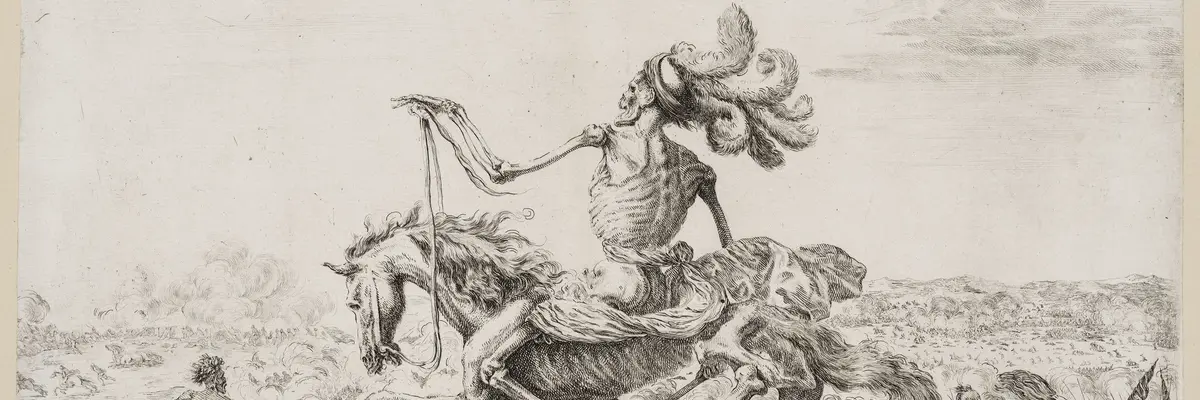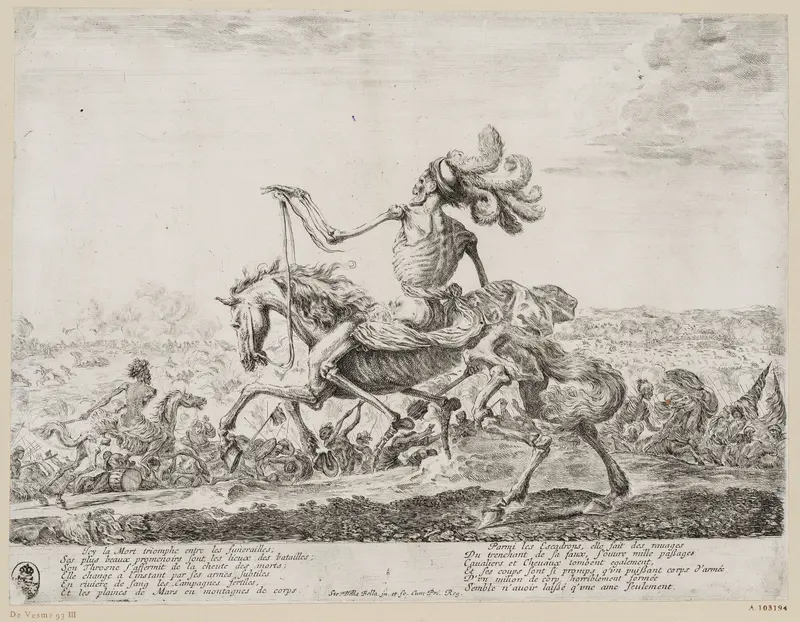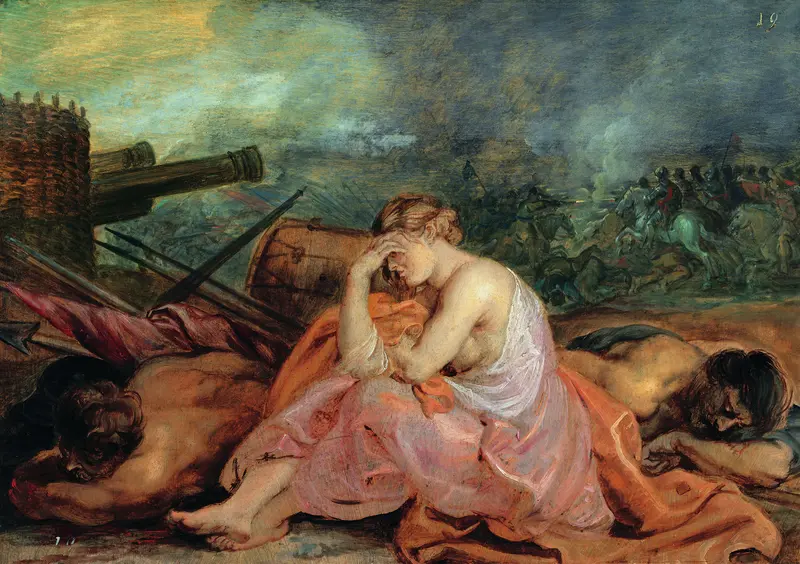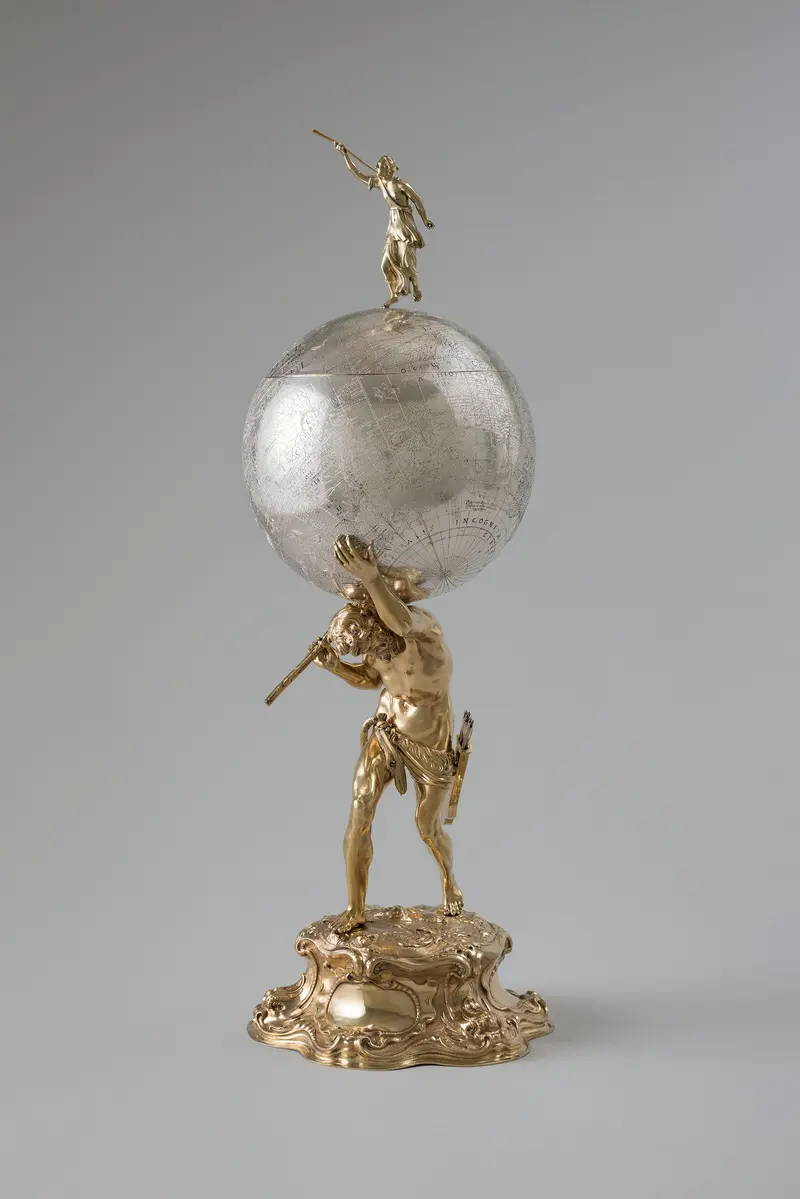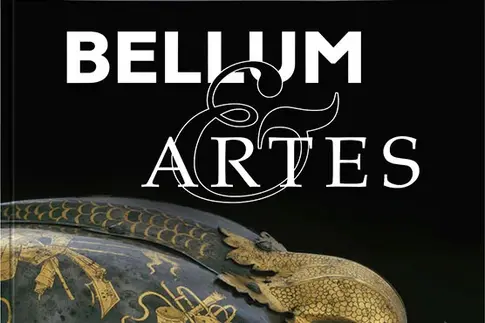Exhibition Tour
Fürstengalerie (The Princes' Gallery)
From the arena of the Thirty Years’ War and depictions of its horrors, the exhibition tour leads to a banqueting table around which the rulers of Europe are gathered together: their history is presented in the mirror of art. This section concludes with a look at European cultural transfer through looted art and migrating artists.
Sponsel-Raum
Precious gifts for diverse occasions: During his long reign, Elector Johann Georg I was presented with numerous ornate weapons, prized horses, bridles, and costumes. Many of these gifts have been preserved in the Dresden Rüstkammer.
Studiolo at Georgenbau
Signed and sealed: original treaties, documents and letters chart the decisive events of the Thirty Years’ War, complemented by selected objects from the Grünes Gewölbe and the Rüstkammer.
The permanent exhibitions also feature numerous other works of art that appear in a new light in the context of »Bellum et Artes«. Specially marked, they form a common thread running through the Dresden Residenzschloss.
